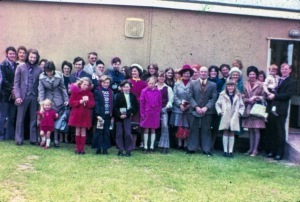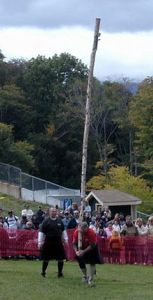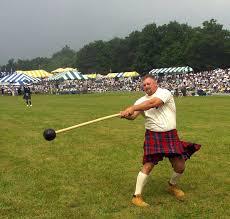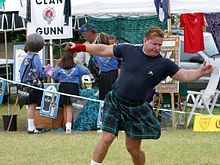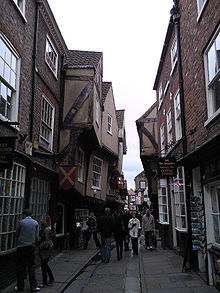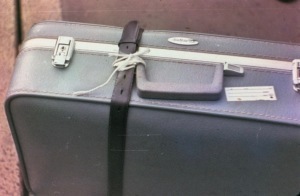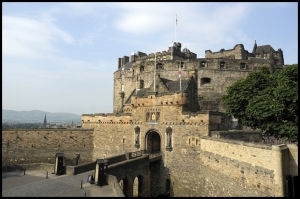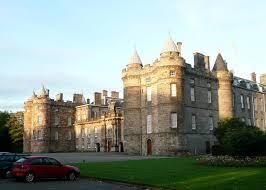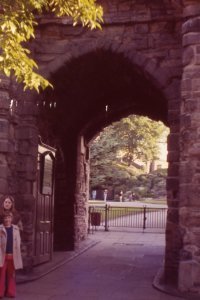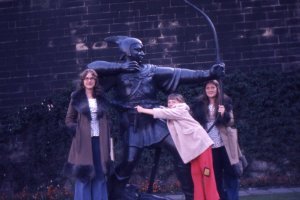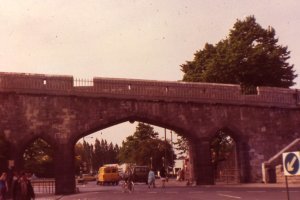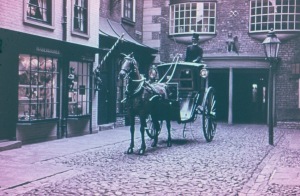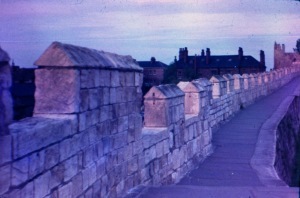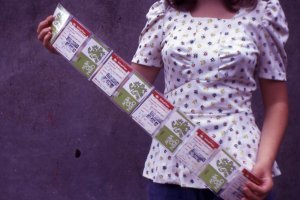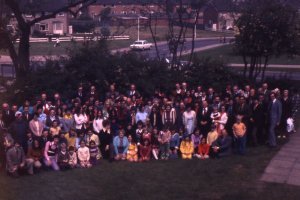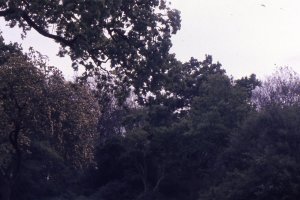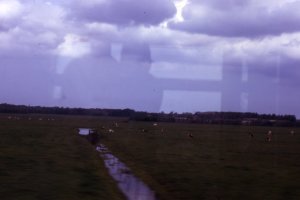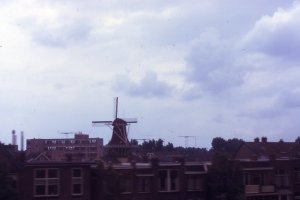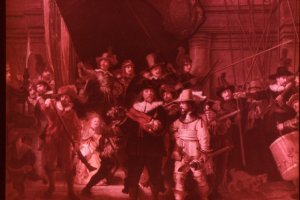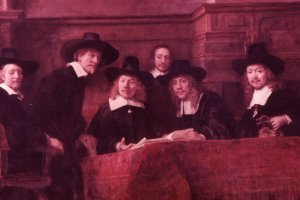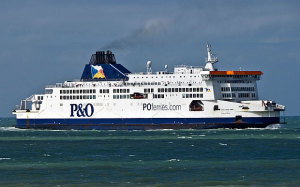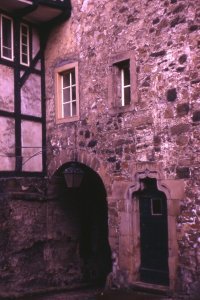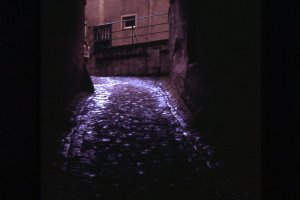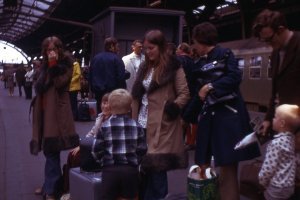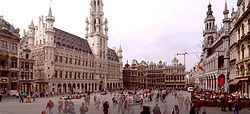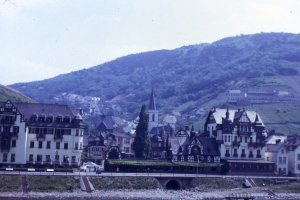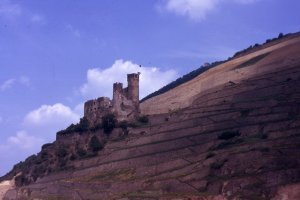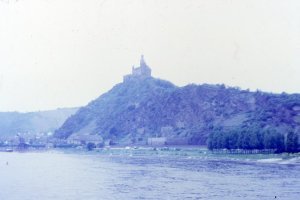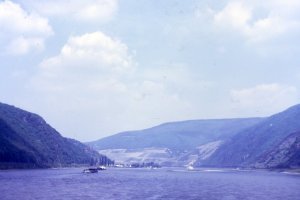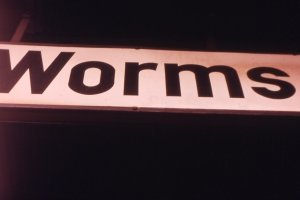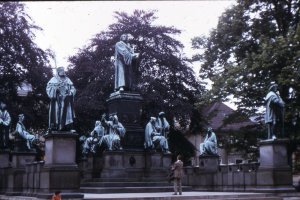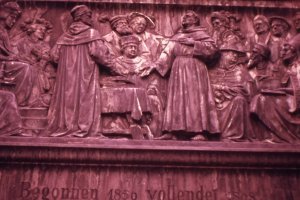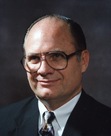David L. Roper's Blog, page 2
May 25, 2016
Europe on 5-10 Nervous Breakdowns a Day (35)
DAY 38 – SUNDAY, JUNE 2, 1974 – WORSHIP AND HIGHLAND GAMES
The church of Christ in Glenrothes was only a year old, but they already had twenty-five members with funds to buy property to build their own building. At the moment they were meeting in a hall. Several of their members were out of town, but they still had thirty-six present (eight were non-member visitors). I preached on “Obedience.”
In her journal, Angie wrote, “Went home with Betty & Sherry ([their] POODLE). Took Sherry for a walk!” Walking a poodle was the highlight of our visit to Scotland for Angie.
In the afternoon, our hosts took us to a Highland Games event at nearby MacKinch. We got there at 3:00ish and had to leave about 4:30. I really enjoyed this and would have enjoyed spending the day. (I do not know what became of my slides of this occasion. I include several commercial shots to illustrate the events.)
This was kind of a Scottish track meet with miscellaneous Scottish events thrown in. There was a big oval with several events going on simultaneously. There was always a group of bagpipers playing. The constant whine of bagpipes gave the event an authentic Scottish flavor. On one side were young people in costume competing in Scottish dances. Here and there on the grounds were other bagpipe groups practicing before they entered the oval to compete.
I especially enjoyed the “raw strength” competitions such as tossing the caber (19½ feet long and 175 pounds; think massive telephone pole), . . .
. . . tossing the hammer, . . .
and tossing the weight (45 pounds).
I thought the tug-of-war competition was hilarious, although it was deadly serious to the competitors.
It sprinkled off and on, but I didn’t notice it much as I dashed from one side of the oval to the other. But about 4:15 I suddenly missed our group. I found them back at the church bus. They had been there about thirty minutes out of the cold and the rain.
That evening, I preached “When the Books Were Opened.” The preachers had heard the sermon in Corby and requested that I preach it. About thirty were present, including a number of non-members. One man told me he planned to become a Christian soon.
Afterward we went to the McGregors’ for sandwiches. Debbie and Angie and their daughter (Betty?) went bowling. Cindy didn’t go. She was tired and lonely (she had started crying after the evening service). She was all right until Corby but the fellowship there made her miss her friends at Macquarie. She washed her hair and went to bed.
Eventually Jo, Angie, and I returned to the Strachens’ home. Went to bed at 11:00ish. It was still light outside.
May 22, 2016
Europe on 5-10 Nervous Breakdowns a Day (34)
DAY 37 – SATURDAY, JUNE 1, 1974 – YOU GOTTA TRY THE HAGGIS!
My “to-do” list for Saturday morning in Edinburg was rather complicated: We had to be out of the rooms by 11:00; there was a bagpipe performance we wanted to see at 11:00; I had a list of places to see; and Jo needed to do laundry.
We started with the laundry. The maid said there was a “coin-operated” dry-cleaner and laundry nearby. We hauled a suitcase full of dirty clothes there. Turns out it is not a facility where the customer does his own laundry. Apparently “coin-operated” means something different in Scotland.
Next: Check out of our rooms. We packed up and rode a bus to the train station. We couldn’t use the lockers because of a bomb scare in Great Britain, so we left five pieces in the “left-luggage” office—including the suitcase of dirty clothes.
Next: Bagpipe performance. Bus to downtown. Turned out to be one young man. We listened awhile.
Next: Visit some places. One of the British pre-restoration groups was the Sandemanians. Some of them were supposedly meeting on a certain street, but I couldn’t find the place.
Time to eat. One of my books had recommended a salad place, but there was a long, long, long line. Woolies (Australian for “Woolworths”) has a cafeteria, so we went there.
Haggis was on the menu. I thought we should try it since we were in Scotland. When I asked the serving lady which entrée was haggis, she pointed to some dark hash-looking stuff. I told the woman to give us four servings of it. She looked uncertain and asked if we had ever had it. I said “No” and she put a little on a plate and had me sample it. I thought we could handle it, so I repeated my order. A Scotsman standing next to us was encouraging me, telling me how great it was. (I later noticed that he had gotten fish and chips!) Debbie heard some Scottish people behind us saying “Ugh!” so she added her protest.
Jo, Cindy, Debbie, and I finally got our haggis (Angie had a child’s plate of a sausage with chips). Haggis is ground meat (probably mutton) and oatmeal and is heavily spiced. In olden days, it was cooked in a sheep’s stomach. The Scotsman who had encouraged me to get it was seated nearby. He told us, “Of course, haggis is supposed to washed down with whiskey.” I don’t know about whiskey but I would have appreciated a great big jug of cold water!!
After we ate, the womenfolk decided to shop in Woolies, so I wandered around town without finding what I wanted to find.
It had turned cold and everyone was tired so I didn’t suggest we do any more sightseeing. We went back to the station, got our luggage, and caught the next train to Kirkcaldy. We arrived at Kirkcaldy about 3:30. It was raining some now. Our destination was nearby Glenrothes. One of the preachers there, Alex Strachen, had told me to call him. I did and he was there in twenty minutes.
I told Alex I would like to visit the Kirkcaldy meeting place before I left Scotland so he ran us by before we left town. This was originally a Scotch Baptist group but Alexander Campbell preached there on his trip to Scotland and they had become a church of Christ. The old building had been torn down several years earlier, but they still had the original furniture, including the pulpit where Campbell preached. I wished for a flash attachment, but did the best I could taking slides.
We traveled on to Glenrothes. Jo and I and Angie stayed with Alex and his wife Moyra. Alex is a 39-year-old Scotsman who trained at the Sunset School of Preaching in Lubbock, Texas. Friendly, friendly folks. Cindy and Debbie stayed with Paul MacGregor and his wife. Paul is a 55-ish Kentucky farmer who had also trained at Sunset.
We had tea. Then Alex and I visited while Jo and Moyra did our laundry (finally). Eventually to bed.
May 17, 2016
Europe on 5-10 Nervous Breakdowns a Day (33)
DAY 36 – FRIDAY, MAY 31, 1974 – TO EDINBURGH
Friday morning we needed to catch the 10:53 train to Edinburgh or we would have to wait for an afternoon train—but had a hard time getting started. We finally had breakfast at 8:30 and about 9:15, we had our bags downstairs ready to go. I paid the manager and he said we could leave our bags with him until train time
I had a couple more things I wanted to see in York, but we were short on time. The women wanted to stop at every store window (especially those with displays of shoes) but I hurried them along as fast as I could.
I first wanted to go through the Shambles (an old English word for “meat market”; see 1 Corinthians 10:25, KJV). The Shambles is the old butchering section of town that has been converted into shops. It is supposed to be the most authentic old English street anywhere. What fascinated me most were the buildings where each floor jutted out a foot or more further from the floor below. It looked like you could reach out a window on the top floor and touch the building on the other side of the street. (Most of the pics in this post are commercial.)
Our ultimate destination was The Munster Cathedral (a “famous” cathedral I had never heard of). The Munster was the most attractive cathedral we had seen. Some parts are very old. It is called “the mother church” of northern England.
Time was running out, so we headed for the train station, walking on the walls one last time before picking up our bags at the hotel.
On the way to the train station, the handle on the bag Debbie was carrying gave way. This was the bag in which I put some books that wouldn’t fit in my briefcase. Debbie tucked the case under her arm until we got to the station. There I tied it up with an old belt and wrapping string. Like us, it is just trying to hold together until we get back to Australia.
On the train to Edinburgh, we were more split up than usual. I was in a four-seat arrangement with two Asian girls and an older gentleman. Debbie was behind me in another four-seat grouping. Jo and Angie were across the aisle from her and Cindy was 6-8 seats away. We were still seated like that at noon and I wasn’t sure how we were going to eat since we needed to prepare what we had brought. But shortly after that, people started getting off and our family got back together and had lunch.
The trip took three hours. Jo likes traveling on the train. She knows what’s going on, doesn’t have to walk, and gets a chance to rest. I think she feels more secure on a train.
We arrived in Edinburgh about 2:00 and had an interesting finding-a-room experience. As I got off the train, I put my weight wrong on my bad ankle (the one I broke a few years ago) and for a while it didn’t want to work. I was finally able to limp along and we moved our luggage into the waiting room to leave with Jo, Cindy, and Angie while Debbie and I ventured forth to find lodging. As Debbie and I started out, a porter came up and asked, “What’s the matter?” He had seen me limping. He asked if we had a place to stay and said there was a woman in the waiting room who had a nice guesthouse. He took us inside and pointed out the woman. She said she would put the five of us up for £10.00 ($25.00), including breakfast. I said, “Okay.” She took Jo, Debbie, and Angie in her car, along with an American couple. On the way to the house, she gave her carload a tour of the city. She then sent her husband back for Cindy and me and our luggage.
The designation of where we stayed is The International Guest House. The couple is Scottish, but have lived in the U.S. and Canada (they are teachers). The guesthouse had been totally remodeled and was easily the nicest place we stayed on our trip. (It even had SOFT toilet paper!) The woman gave us a map of the city, told us which buses to catch, and gave us tea and biscuits (cookies).
After a short rest, we caught the bus to town. After walking a bit, we were on “the royal mile”—a street that runs from Edinburgh Castle to Holyrood Palace, the official resident of the English monarch in Scotland, but more famous as the 16th century home of the ill-fated Mary, Queen of Scots. We first turned in the direction of the castle. We passed St. Giles where John Knox preached.
At the castle, our open-to-view saved us another $2.50 (I still doubt we’ll get our money’s worth).
(Nobody leave the room! Who stole my personal slides inside St. Giles and my slides of the castle with my children???)
We went back to where we started on the royal mile and headed toward the palace. We passed John Knox’s home. When we got to the palace, they were having a big Scottish do (people were arriving in kilts), so we couldn’t tour.
It was getting latish anyway. We found a store and bought a bit of food to finish out our tea. Debbie and Cindy opted to walk back to the guesthouse, but Jo, Angie, and I caught a bus.
We had tea, then Jo and I started preparing for an early night. While we were doing so, Angie came into our room crying. She had locked herself in the bathroom and couldn’t get out. She had hollered, hit the door, and finally started crying, but we had not heard her. But the people upstairs heard her and the maid had finally come and let her out. Angie said she was never going into that bathroom again! I went with her to the bathroom and had her show me what she had done. Turns out she had turned the knob the wrong way and then panicked.
When we went to bed at 10:30, it was still light. I’ve mentioned how long it stayed light in the evening on our trip and this was never more evident than when in Scotland. We were told that in the middle of summer, it never gets completely dark at night. Someone noted that Scotland is only two hundred miles from Norway and the only thing that keeps it from being unbearably cold is the Gulf Stream.
May 15, 2016
Europe on 5-10 Nervous Breakdowns a Day (32)
DAYS 34, 35 – WEDNESDAY & THURSDAY, MAY 29 & 30, 1974 – NOTTINGHAM & YORK
Wednesday, it was time to leave Corby. Our family would have enjoyed another day or two, but it was time to say good-bye to the Worgans. They were exhausted from the lectureship and we thought they would feel strange if we got a hotel room.
We caught the bus near Frank’s house at 1:55 and were soon in Kettering. We walked to the train station and caught a train at 2:30ish and arrived in Nottingham at 3:00ish. Nottingham is now an industrial town with train tracks running through the middle of town. Robin Hood would never have recognized it.
I had no recommendations regarding reasonable places to spend the night, so Debbie and I left the rest of the family while we looked. We only had one choice a reasonable distance from the station: £1.50 for Angie and £3.80 each for the rest of us—in three rooms, for bed and breakfast.
After we were installed in our rooms, we went exploring. The part of town the hotel was in was pretty shabby (a sex shop was next door to our hotel), but a couple of blocks away we found a new shopping mall under construction. I got a map and some instructions. We also bought food for lunch the next day.
We then had fish and chips (i.e. french fries) . . . and a “milk shake.” The milk shakes in Australia are wimpy with their small spoonful of ice cream, but these had that beat. They had a “chocanilla” syrup which combined chocolate syrup with vanilla flavoring. They put this in some milk with no ice cream at all and whip it up. All froth. A cold glass of milk would have had twice as much milk and cost half as much.
We next walked to the Nottingham castle. The old castle (part of the Robin Hood legend) is now gone and a more “modern” castle (built in the 1700s) is in its place. But the location, gates, etc. are the same. The grounds are beautifully kept.
There is a statue of Robin Hood there.
I don’t think I’ve mentioned that the weather has been nice since we got back to England. A little cooler than it would be in the U.S. or Australia, but sunshine most of the time (one small shower) and very pleasant as long as one keeps a jacket handy.
Wednesday night, but no place to go for a midweek service. After a few days’ break, it was hard to get back into the routine of traveling, so we were all rather grouchy.
Thursday morning everyone seemed more chipper.
We caught a train at 11:39 to Derby (pronounced “Darby”). At Derby, we changed trains for York. York is an old walled city with a notable museum. The plan was to spend the night there and then go the next morning to Scotland.
We arrived at York at 2:30ish. Outside the station, we had our first glimpse of the walls. They are about two and half miles long and completely enclose the older part of the city except for a few spots where they have been torn down to construct buildings.
Debbie and I found a room. Then, after a short rest, we headed for the York Castle Museum. It was almost 4:00 so we didn’t know if we would have any time there. We were in luck because the museum stays open until 8:00 during tourist season.
The museum shows how people lived at different stages of English history. The main attraction is a recreated Victorian cobbled street with costumed guides and period rooms including a schoolroom.
Outside the building was an old, old tower set on a high mound, part of the original fortifications of the city. Three of us climbed up to this.
It was nearing 7:00 and we hadn’t eaten. Our hotel was near a supermarket, which was still open. We bought some yogurt to go with the bits and pieces of food we had left, plus food for lunch tomorrow.
During our entire trip it seems to stay light longer than we are used to. Everywhere we’ve been is considerably farther north than where we live; does that make a difference? Anyway, about 8:30 we decided to give the walls a closer look. The four original gates are still there. We headed for the Micklegate to the south (the road to London). This is the gate where they hanged the heads of traitors as a warning to those who visited the city.
From there we strolled around the walls. There is a walkway on top of the walls (for soldiers defending the city?).
We walked on the wall until we got near our hotel. Then to our rooms and to bed.
May 10, 2016
Europe on 5-10 Nervous Breakdowns a Day (31)
DAYS 30–33 – SATURDAY–TUESDAY, MAY 25–28, 1974 – THEY SPEAK ENGLISH!
At 6:00 a.m., the ferry was nearing Harwich, England, and we were about to start the next part of our adventure. The plan was to go to Corby, England, for a Sunday–Tuesday Bible Lectureship (over a bank holiday), then head north.
About 7:00 a.m. we left the ship, went through customs, ending up at the train station. I got our Britrail passes validated. (In the picture below, Debbie is holding our Britrail passes which are interspersed with our “Open to View” passes to several British museums, castles, etc.)
From here on, there would be no train reservations and we would be traveling 2nd class. (Yes, we had been spoiled traveling in 1st class compartments with our Eurail pass.)
We took several trains, then a bus, and arrived at the bus station in Corby about 1:00. Eventually we made it to the home of Frank and Isabel Worgan where we would spend the next few days. Frank is the preacher at Corby.
Frank informed me that he had been contacted by Joe Nisbett from Northern Ireland. Joe wouldn’t be coming to the lectureship and he said to tell me that it was not safe for me to come teach in the Northern Ireland Bible School. On May 17 (two weeks earlier), the UVF (Ulster Volunteer Force) had exploded four bombs in Ireland, killing thirty-three civilians and wounding three hundred more. Joe Nisbett had sent his two boys to kinfolks in Scotland, but his wife refused to leave, so he was staying with her. Teaching in training schools in Vienna and Ireland was supposed to be a major part of our trip and both had fallen through!
The lectureship started Saturday night (I had not known that). I filled in for Joe Nesbitt on Sunday night. I preached “When the Books Were Opened.” “Ed and Edith” came forward (if you remember my tract on “When the Books Were Opened”)—an unfaithful couple with a young child whom the congregation had been very concerned about. Another man asked for prayers. I also did a magic show for the young people after the service Sunday night and filled in for another preacher on Tuesday eve. Everyone was extremely responsive—no “English reserve” in sight!
A note on their building: In front of the front pews, they have moveable panels about waist high (waist high when seated). Frank called them “modesty boards.”
Judy Barker, our friend from Australia who had been with us in London, showed up for the lectureship. Judy told me, “I went halfway around the globe to see the rest of the world—and I still have to listen to you preach!”
There were over 200 people at the lectureship. (The picture below is of the crowd present during the day. You get extra credit if you can spot any of our family.)
I might mention that Corby is located in what used to be part of the Sherwood Forest, so I snapped a picture of some of the remaining trees. I thus got a picture of Robin Hood’s Sherwood Forest even before getting to Nottingham.
May 8, 2016
Europe on 5-10 Nervous Breakdowns a Day (30)
DAY 29 – FRIDAY, MAY 24, 1974 – A LOST CHILD—TWICE!
I thought they said our train to Amsterdam left at 8:06, so we got up at 7:00, straightened up things, ate some yogurt (which we had decided to try—and discovered we liked it!), and headed for the station.
We went to the nearby underground station and caught the next tram. After we got off, we just had a few blocks to walk—which wasn’t bad since we had left some of our luggage at the station.
Turned out the train didn’t leave until 8:37, so we had extra time. I found a vending machine dispensing hot chocolate. That finished our breakfast—except for apples and cheese we would eat on the train.
When we don’t have reservations for a train, we usually can’t sit together. The first on the train sit in the first unoccupied compartments they come to. Folks in the next wave sit in the compartments with the fewest occupants. By the time we get on, there is never a compartment with room for five people. So, on the train to Amsterdam, Jo, Debbie, and Cindy started out in one compartment while Angie and I were in another.
Shortly after the train left the station, I shaved. I’m getting pretty good at shaving in tiny shaky rooms using cold water and a pint-sized basin. It is not much harder than it would be on a bucking bronco. After that, I read my Bible and worked on our upcoming travels in the British Isles.
We were scheduled to arrive in Amsterdam a little after 11:30. The letter I had received from Amsterdam indicated that (1) we would be an imposition on the brethren there at this particular time and (2) it would cost a fortune to spend the night there. So I had booked us on an overnight ferry to England. Which meant we wouldn’t have much time in Amsterdam.
Some got off the train so we were finally able to be in the same compartment. We ate our apples and cheese and watched the Dutch countryside go by. A wide canal ran alongside the tracks, then from time to time a smaller canal ran from the big canal across the fields. Some of these secondary canals were big enough for small boats to do down. Along the sides of the big canal were hundreds of houseboats. (They have to pay a fee to use the canal for this purpose.)
We began to see windmills and passed huge fields of tulips (only a few were in bloom—still too early?).
It was almost noon when we arrived in Amsterdam. I exchanged some money and we put most of our luggage in storage. Then I got information on how to catch the ferry. I liked the arrangement in their information/reservation area. At each counter was a little device that dispensed numbered tickets. Above each counter was a device with changing numbers. When your number came up, you stepped to the counter. (What a marvelous idea! I wish they had this all over Europe!) The train we had to catch did not leave until 9:10, so that gave us a little over eight hours in Amsterdam.
I had already figured out that the only way we would see anything in Amsterdam would be to take a guided tour. We had stayed away from costly conducted tours, but we would not have a hotel bill that evening, so could afford it this once.
We could have taken a canal tour, which is less expensive than a bus tour. In front of the train station was a canal with tour boats waiting. There are one hundred canals in Amsterdam (all man-made) and one river. They date back to the 17th century when Amsterdam was the center of European commerce; they were built to provide fast inexpensive transport. But a canal tour doesn’t make any stops and I wanted to go to the museum with Rembrandt’s paintings (the Rijksmuseum), so it had to be a bus tour.
We bought some sandwiches for lunch at the station and started walking, looking for a bus tour. We found one that left at 2:30. We had a little time so we walked a bit more, taking in downtown Amsterdam. The weather was off and on: showers and sunshine. The girls found a souvenir place (surprise!). Here and there we saw people in native costume (a few even wearing wooden shoes).
The tour was interesting. We saw the queen’s palace and the home where Rembrandt lived. At the diamond-cutters, a man explained in different languages how diamonds are cut. At the end of that visit, we were shown a variety of diamond rings. Jo didn’t care for most of them, but finally decided she wouldn’t mind having a simple little wedding band that only cost $700.00 U.S.
Our guide told us there are a thousand houseboats in Amsterdam, largely because of the housing shortage. The strangest one we saw was covered with vegetation. The guide said a U.S. hippie owned it. Of interest to me were the large hooks for hoists near the top of the front of each building. These are for getting furniture in and out of buildings (the stairways are too narrow for this purpose). Can you imagine hoisting a grand piano up four floors, outside the building?!
We passed a little oddity: a massive hotel covering about half of a U.S. city block and many stories high. In the middle of the ground floor is a tiny shop (dated 1600 something) with a narrow three-story home above it (the width of a single room). The story behind this: The man who wanted to build the hotel bought up all the houses and shops in the area, but this shopkeeper refused to sell. So they built the hotel around him.
When we reached the Rijksmuseum, we only had fifty minutes to tour it. Our family tour started by everyone going to the toilet (free!). We then glanced at a few paintings as we headed to the Rembrandt section.
My initial surprise regarding his paintings was that most of them are SO BIG (“The Night Watch” is almost 12 by 14 feet).
There was the familiar painting found on Dutch cigar boxes: “Syndics of the Draper’s Guild.”
And of course “The Night Watch” and many others. I love his light/dark contrast! In one corner was a collection of his sketches showing his preliminary work on the subjects. After a quick look at that, we hurried on so I could buy a few slides, the girls could buy some postcards, and we could go to the free toilet again before it was time for the bus to leave.
But when we got to the next room, we realized Angie was not with us! For ten minutes or so (it seemed much, much longer), we could not find her. I felt certain we would locate her, but I knew she had to be frightened and upset. Turns out she had stayed at the sketches. When she missed us, she retraced her steps–away from us. When we finally found her, it was obvious she had been crying. A scary time for everyone.
We hurriedly bought some slides and postcards and checked out the toilet again. By my watch, we reached the tour bus exactly on time. By their watch, we were a minute late and the last ones to board.
We got back to where we started shortly after 5:00. On our previous walk, I had located a self-service food place the book mentioned. It has a wall of little glass doors on the outside wall (i.e. next to the sidewalk). In the compartments are sandwiches, potato salad, sausages and other hot items. There is also a dispenser for hot and cold drinks and veggie soup. Each item costs 50 cents (20 cents U.S.). I gave each member of the family $2.50 ($1.00 U.S.) to get whatever they wanted. We tried almost everything. The drawback was that we had to eat standing up on the sidewalk and it was cold. (You can go inside, but the food costs more in there.)
Afterward, on the outside of a nearby shop we found an automated dispenser of soft ice cream for 25 cents (10 cents U.S.). Best ice cream bargain in Europe.
By this time, we were all very tired. We headed back to the train station to find a place to sit down. As far as we could find, there are no seats or waiting room. (The only “waiting room” is a restaurant. Apparently one is supposed to pay to eat and drink while waiting.) Near the baggage counter, there was a platform not being used and we claimed a spot on that—next to two Dutch tramps. They were eating small fried eels. They pinched off their heads and threw the heads on the floor. They peeled them and threw the peeling on the floor. They ate the meat off the skeletons and then threw the skeletons on the floor. They offered me one, but I said, “No, thank you.”
The girls roamed the station, bought some postcards, and then told me they wanted to look around some more. Jo stayed with our luggage while the girls and I again checked out downtown Amsterdam. We returned in about an hour. We were dying of thirst so we all went to the W.C. (10 cents U.S.) and drank out of the tap after we washed our hands (yes, you can drink the water in Holland).
We got the rest of our luggage out of storage and found the platform where we would catch the train to Hoek, where we would board the ferry. When the train arrived, we were among the first ones on and had a compartment to ourselves. I was exhausted and my hip joints felt like they were on fire—a result of playing ping-pong I guess, followed by all the walking. This was our last use of our Eurail passes, which expired at midnight. From here on, we would use our Britrail passes.
We left Amsterdam at 9:10 and arrived in Hoek at 10:45. Apparently everyone on the train was going to the ferry. We got off the train, went through a plainly-marked door, lined up for a passport check, walked through another door, and there was the “ferry”—really a massive ship the size of a small ocean liner. (The pic below is a commercial shot of one of English Channel ferries.)
We went up the 2nd class ramp, but then didn’t know where to go. I heard a man tell someone where the cabins were and I told him we just had seats (the guy in Vienna said he made us reservations for seats). He directed me to a woman who told me our family was not on her list for seats (these are seats similar to airplane seats that lean back for sleeping). She told us to go to the purser. The purser said that all we had were tickets for the crossing and that we needed to go up one deck to the “sitting rooms.” Some were taking their luggage downstairs but we weren’t sure what to do so we took ours with us to the sitting room—which turned out okay since we had to open our suitcases in the night to put on more clothes to try to keep from freezing.
The sitting room was already full of people, most of them sprawled out on the seats without arms. Turns out you can board the ship at 9:00 and the space in the sitting rooms is “first-come-first-served.” We found a few seats with arms and sat down. The ferry has a cafeteria, a bar, a shop, a deck, etc.—all open until 1:00 a.m. They even had free WCs with paper cups for drinking! Many folks lived it up for the next two hours, but all we wanted to do was get comfortable and maybe get some sleep.
There was carpet on the floor and it was not long until Angie lay down on the floor near our seats. Soon Debbie followed, then me, then Cindy. Turns out this was not uncommon since the back-packing young people who hadn’t grabbed a seat to sleep on pulled out their sleeping bags and laid down. Eventually Jo joined us.
It was one of the most miserable nights of my life. Either they turned off the heat or else my metabolism plunged. At any rate, we were very, very cold. I got out my other coat from the suitcase but that didn’t help much. Then they left on all the lights for most of the night and some lights all night. Then there were two loud-mouths near us: an English young man with an American kid as an audience. They were filthy-mouthed as well as loud. When they started telling dirty jokes, I raised up and said, “Hey, podnah, I’ve got young girls back here.” All my fuzzy, sleepy brain could come up with on the spur of the moment. The guy said, “Sorry” and went back to filthy talking.
In the night, Jo poked me and said, “Angie’s not here!”
We had lost her. Again!
Jo found her two groups of people away. She was huddled up with another family that was also sleeping on the floor.
May 3, 2016
Europe on 5-10 Nervous Breakdowns a Day (29)
DAY 28 – THURSDAY, MAY 23, 1974 – FROM GERMANY TO BELGIUM
I woke up Thursday morning sore all over—from playing ping-pong, which had used a different set of muscles (specifically those needed to bend over and pick up the ball when I missed it).
About 9:45, Debbie and I went with Phil to get some folks who were going to spend the day (a holiday) with them: a woman who is the only other member of the church of Christ in the area and three little girls she takes care of. On the way, we saw some nice scenery and old half-timbered German homes, but didn’t stop to take pictures. On the way back, Phil drove us to an old castle.
When we reached the courtyard, it started raining and we got soaked before we could get back in the car.
It was close to 11:00 by the time we got back. The Nilands usually have a midweek service with the woman and another couple on Thursday nights, but we had it before lunch so our family could be part of it. We mainly figured out which church songs both Germans and Americans sing—and sang together.
After lunch, most of us took another walk. During the walk a little boy latched onto me and kept saying, “Dis ist mine fater,” or something like that. Had a hard time getting loose, but I must admit that I wouldn’t have minded having him as one of my own.
When we got back, we put our bags in the car, hugged everyone goodbye, and went to the station. Phil stayed with us until the train left for Koln. (In the picture below, Phil is on the far right.)
I had read that, in Germany, it is customary for guests to bring flowers. We hadn’t had the opportunity to do that earlier, so at the station, I bought some flowers for Phil to take back to Matilda. I also gave him a few marks to help with the cost of food (very little compared with what we ate).
I might mention that I had used some of our free time at the Nilands to bring our financial situation up to date. To my surprise, in spite of a number of unexpected expenditures, we were running about $400 less than we had budgeted to that point. I started feeling more confident that we would make it (!) and even began to hope that maybe we might save our travel fund a few dollars (!!!).
The train left for Kohn five minutes late. Since earlier we had only seven minutes to make connections in Kohn, this made Jo very nervous. But we made up a minute or two. And then, when the train from Hagen stopped in Kohn, the train to Belgium was waiting at the same platform, on the opposite side. We hurried across and got on just before it left.
We pulled away from the station with some regrets. Having spent the better part of four days in Germany, we had seen little except statues in Worms and what we could see from a Rhine steamer. Debbie (who was taking German in high school) was especially disappointed that we failed to get any German souvenirs.
My general impression of Germany? Of course we saw only the northern part, but practicality is the word that comes to mind. They do not seem so tied to the past as some of the other countries are—which, I guess, is both good and bad.
We ate our tea on the train. The day turned nice so we enjoyed the scenery as it flashed by.
When we crossed the border into Belgium, a man came by and asked for our passports. When Jo pulled them out, the man saw they were U.S. passports and motioned that he didn’t need to see them. People may badmouth America but it seems to me that U.S. citizenship is still considered one of the most precious commodities in the world.
We got into Brussels on time. I checked on the next step on our journey: the trip to Amsterdam (no reservations were needed). By the time I did that, the preacher at Brussels and his son had shown up (someone else gotten my letters!): Hans and Chris Enzenbach. Hans (50ish) speaks no English so Chris (30ish) was his translator. Hans has been working in Brussels twenty-six years. They are a lovely pair with a wonderful sense of humor. The friendliest welcome we have received from those who have never met us before. Dean Waller (preacher at Midwest City I mentioned earlier) worked two years in Brussels and told us that we had to go by and meet the Enzenbachs.
Hans had a VW station wagon so could not take all of us and our luggage. Angie, Chris, and I took the tram while the rest went with Hans. Chris took us by tram so we could retrace our steps to the train station in the morning.
They took us to the building where the church meets, which has rooms for visitors. It is an old residence between offices in the middle of town. It has been remodeled for their purposes and is owned by the church. On what we would call the 2nd and 3rd floors are rooms for visitors. They also have other rooms plus toilets on every floor. During one evangelistic campaign, they housed 40–50 and could have housed more.
Hans and Chris gave us a tour of the building, showed us a map that told how to reach La Grand-Place, and then left. It was almost dark by then (9:00). Al Waller had said we had to see The Grand Place so we set forth. We passed the king’s palace complete with guards, passed beautiful gardens and buildings. Everything was lighted and probably looked better than it would in the daylight. Our brief impression of Brussels was that it was a beautiful city.
I kept my eye on the high tower of The Grand Place. When we were almost there, the number of people increased and we came to two lace shops (for which Belgium is known). The girls bought some cute souvenirs there.
A few more steps and we were in The Grand Place. It is a cobble-stoned square surrounded by old tall buildings in an ultra-fancy style (baroque?)—all beautifully lit. (The picture below is a commercial shot of La Grand-Place during the daytime.)
In the middle of the square was a group of Belgian young people folk dancing in native costume. We watched a short while (we were freezing) and then retraced our steps to where we were staying. We got back to the building about 10:40 and were soon in bed.
May 1, 2016
Europe on 5-10 Nervous Breakdowns a Day (28)
DAY 27 – WEDNESDAY, MAY 22, 1974 – A RAINY DAY IN HAGEN, GERMANY
When we woke up Wednesday morning, it was raining, so sightseeing was out. Phil teaches English at a girls’ school in the morning, but he had planned to drop us off at a little village-museum and then pick us up at noon. The village-museum is a re-created old German village with everything like it was years ago. They call it an open-air museum. It would have been a nice trip.
We cleaned up and had breakfast. We had uncooked “quick” oatmeal. They have a jug of hot water. You pour a little over the oats to soften them and then add milk, brown sugar, and raisins. I liked it. They also had breads, cheese, jam, etc., but I stayed with the oatmeal.
It rained all day so we mainly goofed off. Jo washed. I read some. They have a ping-pong table in the basement, so the girls and I played that quite a bit. The Nilands have a bathroom scale, so I checked my weight. 196½, which is good for me. Our strange diet hasn’t hurt me.
During the day, I had a chance to check out the Nilands’ house. It was built by Matilda’s father and is owned by him (the Nilands pay rent). It is large (two floors and a full basement) with the latest gadgetry. Not fancy but very functional. One of its purposes is to serve as a showroom for Matilda’s dad’s products: printed drapes and a type of vinyl wall covering. The price tag in U.S. dollars? $100,000! (We paid $39,000 U.S. for our house in Australia and thought that was high.)
Cindy read a book at the Nilands that told how to recognize a U.S. tourist in Europe. Not the ever-present camera around the neck because all tourists have those (with the Japanese having the most expensive ones). The way to tell a U.S. tourist? They look tired and thirsty.
We have decided the reason there are no water fountains in Europe, no water on the trains, etc. is that Europeans don’t need water. With the exception of a workman getting a drink out of a faucet in Italy, I can’t remember seeing a European drink water. The Nilands drink a variety of bottled drinks, including lemonade and apple juice, but not the water. They said folks in Hagen think the water has already been used three times in the factories and other places and that, even though it is filtered each time, it is not healthy. We drank it anyway.
The rain slowed down in the afternoon and Matilda decided we needed a walk for our health (in spite of the fact that we’d been walking 3–5 miles or more every day). Jo begged off because of a short throat. It rained on us twice. Along the way we bought some groceries. The next day was a national holiday (the shops would be closed) and we would need some food on our trip to Belgium. Again, the highest prices thus far on our trip.
I haven’t mentioned how popular children are in Europe. Angie receives the major portion of attention in our group. Adults smile at her, ask about her doll, pinch her cheeks (in Italy), play with her ponytail (when her hair is put up that way), joke with her, etc. They are especially delighted with her efforts to speak their language.
The Nilands were going to have neighbors over that evening (they had invited them before they knew we were coming). Matilda had a talk with Jo regarding serving alcoholic beverages: the familiar spiel about “Germany is different” and “it is expected.” (Cindy overheard this and got upset.) Nevertheless, Matilda added, they were going to experiment that evening with substituting fruit and veggie juices.
The neighbor has a factory of his own and worked in the U.S. several years ago, so he knew a little English. We had a good visit, with German and English interspersed. The Nilands hope to get a study with the couple someday.
Matilda had all kind of tasty snack foods on the coffee table—along with an assortment of juices: cherry (delicious!), some kind of berry, and a variety of vegetable juices. The “experiment” was a grand success! I think Matilda was surprised.
April 26, 2016
Europe on 5-10 Nervous Breakdowns a Day (27)
DAY 26 – TUESDAY, MAY 21, 1974 – A TRIP DOWN THE RHINE
We got up about 6:00, leaving the hotel a little after 6:30 to make our way to the train station. We breakfasted again on milk and bananas, then caught the 7:27 train to Mainz. When we got there, I asked the guy at the information window where the Rhine steamer is. He said that one has to take one of the taxis, which were in front of the station. We got in one and told the female driver to take us to the Rhine steamer. She said, “Vas ist das schemer?” I tried “boat” and that rang a bell. The taxi trip cost 8 marks ($3.20) so our “free” trip was already costing us.
We were fairly early so had no problem getting on the boat. The girls picked a spot on the top deck, next to the rail. The seats are a kind of deck chair. The steamer itself is quite elaborate: three dining rooms, a souvenir shop, a money-exchange booth, toilets, etc. After we got on, the place filled up with school kids.
Our steamer went to Koln (Cologne)—only a few hours by train, but twelve hours by boat. The aim is a slow leisurely cruise where one can see the old towns on each side plus the old castles on the hillsides. (At the beginning of the trip, we passed a castle every few kilometers.)
The Rhine seems cleaner than some of the rivers we have seen.
Perhaps that’s because it does not run through many major cities. There is much commercial traffic on the river plus many cruise ships. Some of the cruise ships go all the way from Basel, Switzerland, to Amsterdam; these have cabins for the travelers. Some of the commercial boats spend days on the river and are outfitted for families. Sometimes a car is parked on board near the family’s cabin with clotheslines attached here and there. Two barges even had fenced-in swing sets on top of the cabins. It looked strange to see kids swinging back and forth as they floated down the river.
It was sunny and very hot before the boat set off, but once it started, the wind off the water was cold. I figured we would all suffer from sore throats and sunburns.
We had brought snack stuff for lunch. Shortly afterwards, Jo and I moved inside and I wrote a letter to my parents. Among other things, I wrote, “At the moment, Jo’s head is resting on my lap and I am using her back for a writing desk. It has been a pleasant trip. We are too tired to fully enjoy it, but it is still nice. Please let everyone know we are still alive and eager to get back to Australia. (If I were to ask Jo, she could tell me how many days, hours, and minutes until we get back.)” (Later: We were about half way through our trip.)
The toilets cost eight cents and washing your hands cost eight cents. An attendant sitting in the washroom took your money. The first time I went, after paying, I read the tiny notice carefully. It said that the hand washing was free but the soap and paper towel cost eight cents. After that, we washed without soap and without using the paper towel.
‘Most everywhere in Europe it costs to use the WC—if you can find one. One of the more ingenious setups was where they had a vending machine that sold a package consisting of a paper towel, soap, and toilet paper. That eliminated the attendant and/or coin slots in the door of the stalls.
The last part of the Rhine trip was not nearly as pretty or as interesting as the first part. The railroad runs alongside the Rhine so one could probably just go part way and then get on the train for the remainder of the journey. If one doesn’t have the funds to eat in the dining rooms, there isn’t much to do. As time went by, we each had a little cup of ice cream (28 cents each). Then Cokes (50 cents each). Later, a frankfurter and a piece of bread (92 cents each). I had to get some film ($8.00+). If I were to do it again, I would bring lots of food and water and film, something good to read, a cap and jacket, and suntan lotion—and then just lean back and enjoy.
We arrived in Kohn an hour late, but were ready to get off when the boat docked. We hurried off with our bags and caught the first taxi. (The train station was nearby but too far to walk.) The driver didn’t start his meter. I asked about it and best I could tell, he said, “Fixed price.” He charged us five marks (about $2.00). I have a hard time not feeling that people take advantage of me because I’m “a rich American.”
In the station I got a Coke for everyone (60 cents each). And there was a charge for our bags. So, in spite of the fact that the Rhine trip was free and there would be no charge for our housing and evening meal (at the Nilands’), we still spent $32.00 that day. Even basic survival in Europe is expensive.
We dashed into the station and found our train, so caught it okay. Forty minutes brought us to Hagen and—wonder of wonders—Phil Niland was there to meet us. He had gotten my letters. Phil’s wife Matilda is German, but he is Australian. We knew them in Australia.
We thought Hagen would be a quaint little German village, but it turned out to be a bustling modern industrial town of 200,000.
The Nilands had just moved into their new house April 21. It is built beside Matilda’s parents’ home. Matilda had kept something hot for us and while we were eating, her father came over. I couldn’t keep my eyes open so I went upstairs and conked out. Later I got up and went to bed properly. We were going to get up early to do some sightseeing in the area.
April 24, 2016
Europe on 5-10 Nervous Breakdowns a Day (26)
DAY 25 – MONDAY, MAY 20, 1974 – A DIET OF WORMS??
We arrived in Frankfurt a little before 9:00 a.m. We breakfasted on chocolate milk and bananas from a stand. Then I changed some money into German marks.
A Christian woman working in Frankfurt, Irene Johnson, had offered to have the girls stay with her while Jo and I could stay with a couple who lived outside town. But that sounded too complicated since we would have to make our own way to both locales and we had to leave early the next morning. So I rang her and thanked her but said we would try to make our own arrangements. She said fine, but if the cost proved prohibitive to call her back. (Later note: I think that, after Otis Gatewood’s first wife died, he married Irene Johnson.)
Our Eurail Passes entitled us to a free Rhine cruise. I checked on that. We would take a train from Frankfurt to Mainz and get tickets here. I then started calling places to spend the night mentioned in the book. Frankfurt still has U.S. soldiers stationed there. We saw two MPs and several soldiers, and the upstairs of the train station had facilities for them. As a result, many in Frankfurt speak English so I had no trouble calling the hotels. The train station had a big map of the town with a street directory so I could check out where the hotels were. All seemed close to the station.
The first hotel was full and the second wanted 104 marks (about $41.50) for our family. The third sound a bit more reasonable, but wanted me to come see what they had. The girls and I went while Jo stayed with the luggage. The room was about three–four blocks away and apparently in a sex-and-sin section of town (catering to U.S. servicemen?); there were pictures of naked women everywhere. The hotel had two rooms that would accommodate us for 80 marks (approximately $32.00). I said we would take it. No breakfast but a shower just down the hall at no extra charge.
On the way back to the station, we passed a guy who apparently was exercising a pet chimp. The chimp was dressed up and the guy had him climbing up and down a sign. He finally put the chimp in a fancy car and drove off.
We again lugged our luggage to the room. It was 11:30 by then, so we went out to buy groceries. A store was nearby and we bought food for the rest of that day and some for the next day on the boat.
I had a day trip planned to Worms (pronounced “Vorms”), where the infamous “Diet of Worms” took place. No, this was not a meal of squirmy little creatures. A “diet” (pronounced “deet”) was a formal assembly of “the Holy Roman Empire.” The most famous was the Diet of Worms in 1521 where Martin Luther was indicted for his “heretical” views. Jo and Angie decided to stay in Frankfurt while Debbie and Cindy wanted to go with me. We threw snack food in a sack and took off.
The trip to Worms took an hour and a half.
When we got there we had about two hours before we had to start back. I knew there was a statue of Luther there so I thought that would be a starting place, but how to find it? A map of Worms had “Lutherplatz” on it so I thought that we would try there first. We walked around an hour with no success. I finally communicated a bit with a man at the train station and he said we should just keep going the way we had gone, that we had just not gone far enough.
We finally found the statue. Luther’s statue is surrounded by other statues of individuals associated with the Reformation Movement. (In case you ask: There is no statue of Calvin.)
On the base of Luther’s statue are depictions of various stages of his trial.
I wanted to find where the Diet of Worms took place, but couldn’t find anyone else to communicate with. Our time was up by then, so we made our way back to the train station—as usual with mixed emotions. One needs to take a full set of encyclopedias in English on a trip like this. (Later: Today one could take a full set of encyclopedias on his Kindle plus look up anything on his Smart Phone, but we are talking Dark Ages, kids.)
It was past 6:00 when we got back to our room. We ate and I feel asleep. Later I woke up, took a bath, and went to bed.

